#Especially the scanlines
Explore tagged Tumblr posts
Text
Drew @spacy-luna's OC

They're more active on twitter, go give them a follow on there!
#Super proud of the CRT filter#Especially the scanlines#man that looks amazing#sci fi anime#sci fi#retro anime#anime#oc#digital art#crt#vhs effect#crt television#crt tv#crt monitor#my art#art#artists on tumblr
0 notes
Text
my family is watching the hbomberguy roblox video and i’m reflecting on how his work has long had themes of recognizing un- or under-credited works
Plagiarism and You(tube), of course
ROBLOX_OOF.mp3, about Tommy Tallarico taking credit for that and lots of other shit (especially Joey Kuras’s work)
Scanline Directors Cut episode, talking about how he got sole credit for the original Scanline when its him with Shannon Strucci
Halcyon Dreams, about Don Bluth getting credit for Rick Dyer’s game
Here’s Three Videos About Youtube Plagiarism, also obvious
and the running [citation needed] joke throughout Measured Response videos
#i could be forgetting some too#im not gonna rewatch his entire catalogue for a one-off tumblr post#anyway#crow.txt#hbomberguy#youtube#plagiarism#had to edit bc i fucked up the grammar and implied my entire family was doing the reflecting#it was just me#video essays
86 notes
·
View notes
Text
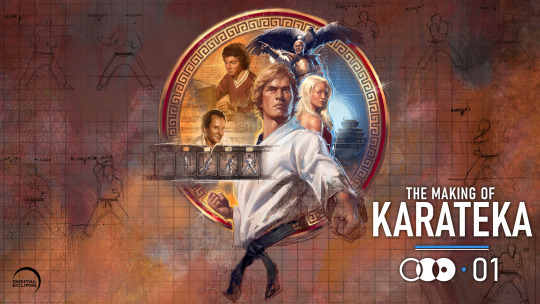
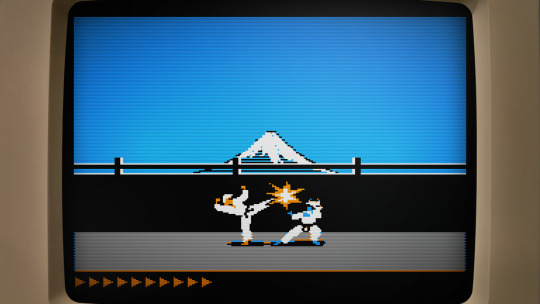
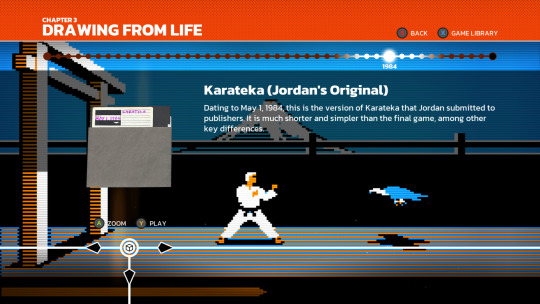



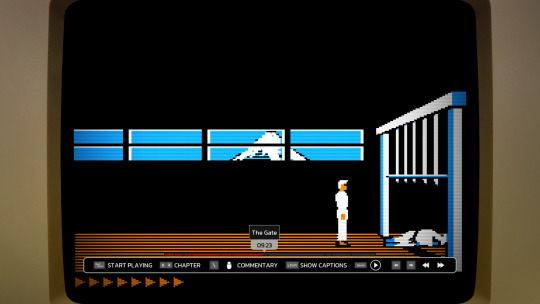
I never played Karateka in the 80s, but as a big fan of Prince of Persia and Jordan Mechner's journals, I was stoked to hear that an interactive documentary about Jordan's prototypical cinematic platformer was in the works by Digital Eclipse.
Released this week, The Making of Karateka on the surface looks like any other game you buy through Steam ($20, Windows-only), GOG, or whichever favorite store or console you prefer (available also for Xbox, PS4/5, Switch). Once the thing loads though, you really get 3 things: a documentary, the original Karateka, and a new remaster.
The documentary part is an audio-visual slideshow retelling Jordan's development story starting with his teenage years pitching his earlier title Deathbounce to the publishing house Brøderbund. It's an interesting look into the iterative process, seen through correspondence letters, journal entries, and many playable builds at various stages of completion. After we reach the eventual rejection of that title, Jordan comes back with a prototype of a visual-narrative experience unseen on home computers. We get to follow Karateka's full life cycle from pre- to post-production, ending with the conception of its sequel (which eventually turned into Prince of Persia). It's a real treasure trove! Fellow pixel artists will appreciate the many graph-paper sketches and interactive overlays of final game sprites compared to rotoscoped outlines and filmed footage. There are also video segments, from a comprehensive breakdown of the music to interviews with other developers reflecting on the impact Jordan's games had on their careers. You'll even encounter a fan letter signed by the one and only "John Romero, Disciple of the Great Jordan and worshipper of the Magnificent Mechner!" (I kid you not, you can't make this stuff up).
Perhaps just as crucial for an interactive documentary like this, you can launch any of the floppy disks in the emulator, trying out various iterations and ports of Karateka.
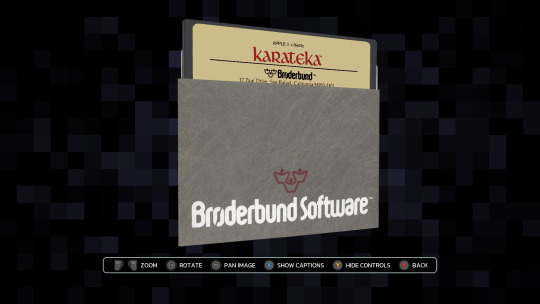
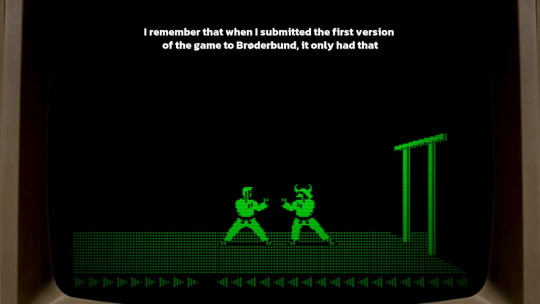
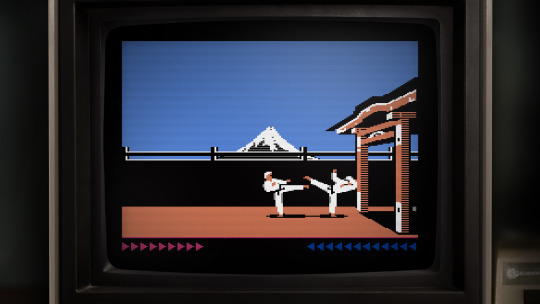
The emulation is fantastic and lets you fiddle with display settings (monochrome or color display, scanlines, pixel perfect or zoomed) as well as enhance the frame rate. You can even rewind the many deaths you will face if you've never played the game before (like me). If you spend some more time obsessing over the weird artifacts of the Apple II hi-res graphics, you might even go down the rabbit hole of realizing that on the Apple II you didn't really paint colors as much as you used different monochrome dithering patterns that the graphics display would then turn into 4 different hues. A fascinating learning experience if you include some of your own research online!
youtube
Add to this the Commodore 64 and the Atari 8-bit versions to compare how the graphics got adapted across the earlier ports and you have a nice way to relieve the mid-80s with a bit of help from modern emulation (I did beat the C64 version without rewinding though!). I'd love to see more art from the other remakes, especially the 16-bit Atari ST port, but I understand their decision to omit playable versions of those due to the lower quality on the gameplay side of the translations.
This brings us to the final part of the package, the modern remaster. Unlike the 2012 complete reimagining of the game (with 3D graphics and all), Digital Eclipse approached the remake as the ultimate port of the original to an imaginary system along the lines of a 90s VGA PC.

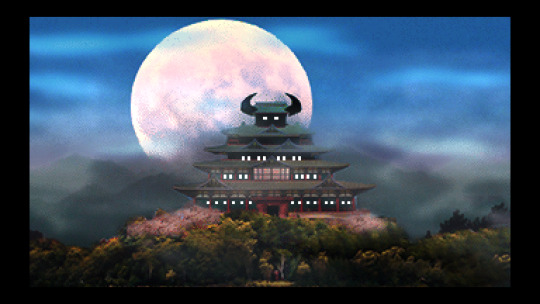
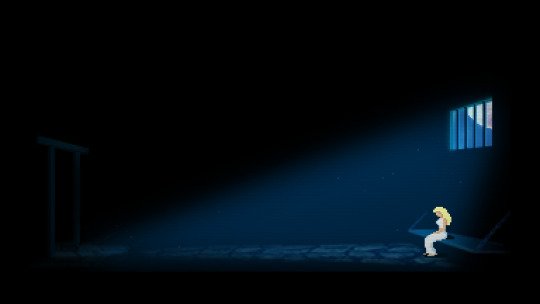
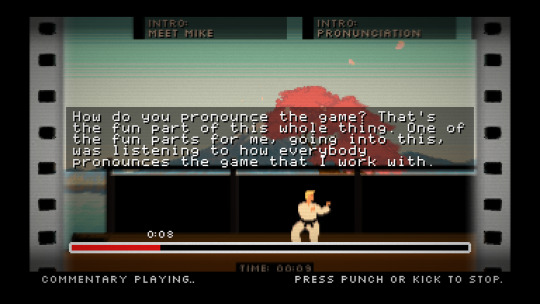
It's well done. Some of the fully-redrawn scenes are a bit overpainted for my taste (I'd prefer a pixel art rendition of the castle than a blurry photographic collage, although there were many games in the 90s that did take this approach), but the in-game graphics are really in style, including the smooth animations that are like one would imagine granted a beefier CPU. It's also a sort of director's cut with previously unseen scenes added, in particular, the battle with the leopard as a clever action-puzzle in the middle. The AI is unfortunately even less challenging than Jordan's implementation. As great as the 6-move fighting system could have been, you yet again resort to simply kicking away opponents as they tirelessly crawl into your range. There isn't even the nuance from the original where you were the one who had to approach some enemies with skilled timing. On the other hand, you now have optional goals and achievements that make the repetitive/easy combat work in your favor (stringing various combos, beating opponents or the level under a time limit …). As the Digital Eclipse president Mike Mika admits at the end of the welcome commentary mode, they didn't manage to achieve their perfect port, but they did come close.
In conclusion, I thoroughly enjoyed playing both the original as well as the remake and while the combat system lacks any sort of depth beneath its stunning animations, Karateka is instead a monumental experience for its presentation. Big characters with personality and realistic motion are displayed through cinematic camera cuts and story vignettes (3 years before Ron Gilbert came up with the word "cutscene"). There are details like animating the unfortunate falling off the cliff at the start of the game, or respectfully bowing to the first guard as they bow in return. Jordan's creative work is precious and worth the attention this release gifts it.
I highly recommend The Making of Karateka to all retro gamers and/or game developers for its immersive documentation which provides an experience that goes beyond the usual video documentaries. It's interactive—just like the subject it's talking about—something I want to see more in the future. And if the $20 by any chance seems high to you, consider that the original retailed at $35 (and that was in 1984 dollars).
youtube
77 notes
·
View notes
Text
Okay, so, wild speculation time but: I think Nashi could appear in Duskmourn: House of Horror. Like, in a major role.
Now, I, obviously, do not wish harm upon Tamiyo's beloved ratperson son, but also I think there are a bunch of factors that make it make sense for this to happen. [Edit to add: uh wait hang on we got some Duskmourn art in the [admittedly too long] I spent writing this?! Really?!]
Like, enough that I'm going to stick a "read more" in here.
Anyway, to start off: Wizards probably does need some established characters to Experience the Horrors. Like, there's the idea of horror as corrupted familiarity - already-known characters can be a source of said familiarity. It's why all those Pokémon creepypastas exist[1]. Also every set has at least some tie, at the very least thematically, to the larger plot (yes even Zendikar Rising). This, obviously, doesn't necessarily mean Nashi, specifically, has to be there, but it is relevant context for all the rest of this.
Nashi is teen-coded [I do not know quite how old he's meant to be, and him being a Nezumi might complicate it, but he is still A Teen in every important respect]. Now, I am no Modern Horror Expert (tm), but a lot of those stories do focus on teen characters and... in terms of the present timeline we have Nashi, Kellan and. Uh. Shadowblayde-with-a-y? Like there are not that many Teen characters, especially with the recent timeskips. Like, Rat might technically be 19 at the youngest now. And, speaking of Rat, well, with apologies to her fans, I think we're still close enough to War of the Spark for Wizards to be nervous about introducing a new character to be the token teenager [in the main story. There might be other Teenaged Horror Protag/Victim creature cards in there].
Nashi also just starred in a story in a set with 43 other Legendary Creatures [not including Commander exclusives, or Loot], despite not getting a card himself. This might just be because Wizards let Akemi Dawn Bowman write whatever for her OTJ side-story, but there might well be a reason they brought Nashi back here. (I mean, it's a good story, and sometimes Side Stories are just there, but I'm assuming relevance for the sake of argument.)
"A Long Way From Home" further established Nashi's power as cameras - indeed, his entire thing as telling stories through cameras. The very limited information we have for Duskmourn includes the set logo. Which has freaking scanlines. Also cameras and found footage and people attempting to record the horrors for posterity are all modern horror staples [I would do a list but it would get long]. Again, Nashi is the clearest link to these tropes 'normally', and he's just about reckless enough that him getting involved doesn't seem particularly OOC.
Finally, Nashi uses his OP camera powers to steal an "elixir" described thusly: "The liquid was deep red and unmistakably metallic. There was no writing on the bottle, but Nashi's nostrils flared when he picked up its scent. The magic was abhorrently pungent, and the stench made his eyes water.".
I don't think anyone has managed to ID this incredibly suspicious potion. He presumably went ahead and drank this stuff, or otherwise still has it. I would not be surprised if it actually had some ties to the horror plane/plane horror and drinking this mysterious red liquid is part of how you end up on/in Duskmourn (like, it has the urban legend feel to it, and the power, or other desired thing, at an extreme and unpredictable price implemented by an almost cosmic force is also a big horror thing that falls outside of the Innistrad remit). Like this is pure speculation, to be clear, but it also really fits the vibe imo.
SUPER DUPER BONUS POINT
Kaito confirmed for Duskmourn! I mean. Kaito was mentioned in Nashi's story, because Nashi still has very complex feelings about the "Kaito didn't save my mom" thing. So it's a point in favour! But also, like, I feel as if Nashi would be in that type of art if he was appearing, so...
[1] Point adapted from Supereyepatchwolf, who used the phrase "dissolution of our world's boundaries" from... uh, I'm not sure where, Googling gets stuff about demon summoning (like... results about it in those words, thanks 'AI'), and a video he referenced didn't seem to use it in the first several minutes but using "normalcy" as part of said boundaries. (ngl, I like "corrupted familiarity" better).
#magic the gathering#magic story#mtg#text#duskmourn#okay so for context I wanted to write up the legends of OTJ and checking the story made me go “wait... oh no”
16 notes
·
View notes
Text

Was asked about the Cave Story transition effect, wether or not it can work on the SEGA Mega Drive / Genesis, here's an attempt at it.
Read more for an indepth explanation why this isn't so easy and why it still looks weird:
So the backstory was that, as I was watching someone play a bit of this Cave Story homebrew for the Mega Drive, we've noticed that all transitions were palette fades rather than the usual Diamond effect, and so I explained why the effect is much harder to pull off than one would expect it:

This is the animation itself, 16 frames in length repeated for the whole screen, rather simple and something you might(?) expect from an older game but in reality it's a lot more difficult to pull off.
If it were a 8x8 sized animation, this wouldn't be a big issue, you'd just write over every single tile in VRAM for the tileset and fill it in, no problem, Streets of Rage does this in the credits sequence and title as a fade in.
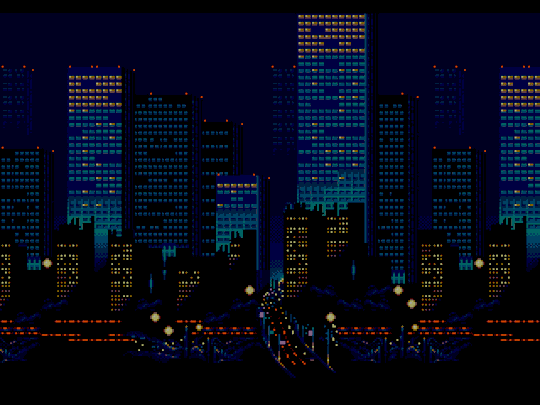
But since we're dealing with a 16x16 pattern, we cna't do this, at least not without curating the tilemap to be friendly for such an effect, which would limit map editing a lot.
So we have another choice, which is to sacrifice one of the available layers for the transition alone. One could sacrifice one of the tilemap layers but unless the other layer's already filling the screen, this would be too noticeable. One could fade the colours for that layer in particular and then overwrite it with the tiles, but ya may as well be doing a full fade at that point, especially if you're intending to use more than one palette for the layers... so i went with an even worse solution: Sprites.
As it turns out, you can just barely fit an entire screen with just sprites, the biggest size you can have is 32x32 and it takes 80 of them to fill the entire 320x224 (NTSC) / 320x240 (PAL) screen area.

The sprite limit is exactly 80 sprites so the sprite table will be filled up with just the transition effect alone.
Now one might think "Hey, the sprite limit for any given horizontal line is 20 sprites and it only takes 10 sprites to fill the screen horizontally, can't we just move the sprites vertically every 32nd scanline? I thought of that too! but there's unfortunately another limit, a Sprite pixel limit.
You can only have 320px of sprites at any given horizontal line, meaning even with free slots, there are too many sprites already on screen so this isn't going to work, there's no way around it.
Now, one could swap between a 16x16 sized version during the start and swap to the 32x32 sized ones after hitting the threshhold to bypass this issue... quite honestly I didn't think of that at the time, it would halve the px limit and should make it near seamless, definitely something I'd like to workshop in the future!
Sure, all sprites will disappear halfway through the transition, but at that point most of the view will already be blocked by the effect so you're ideally not going to notice this happening.
EDIT : Only now am I told that Cave Story has different kinds of transitions depending on doorways and such, maybe giving me more than just the file for the transition for context for someone who didn't grow up playing Cave Story would be nice x.x
#sonic hack#sonic the hedgehog#rom hack#rom hacking#cave story#asm#assembly#m68k#sega genesis#sega mega drive#mega drive#sega
35 notes
·
View notes
Text
This so much but also for horror!
Hbomberguy has a great video on why classic horror works so much better on VHS, and why digital enhancements kill the film completely.
The fuzziness makes you unsure what you're looking at, especially in the darkness. The scanlines, the static, the fuzzy lack of detail makes it so much more terrifying because you're never sure if there's something lurking in amongst the static. When the image is cleaned up and crisp it removes that feeling. You're robbed of the "wait, what the fuck was that???" moments that build so much tension.
I am in love w the way pre 2000s films have that hazy feel to them. hd honestly kills the vibe
#film#hbomberguy#yes I'm tagging this as hbomberguy even though it's literally just me bringing him up at the end of the post#the video i'm referring to is one of his scanline videos btw#you should check it out they're really interesting
105K notes
·
View notes
Text
3ds Max vs Maya: Detailed Comparison of Features and Capabilities

When it comes to 3D modeling, animation, and rendering, two names often come up: Autodesk's 3ds Max and Maya. Both are industry-standard tools used by professionals worldwide, from game developers and filmmakers to architects and designers. However, each software has its unique strengths and nuances that make it better suited for certain tasks and workflows. In this detailed comparison of 3ds Max vs Maya, we'll explore the features and capabilities of 3ds Max and Maya to help you decide which one might be the best fit for your needs.
User Interface and Ease of Use
3ds Max
3ds Max is known for its user-friendly interface, which makes it particularly popular among beginners and intermediate users. The software features a customizable and intuitive UI with a wide array of toolsets that are easily accessible. Its modifier stack system allows for non-destructive editing, making it easier to experiment and iterate on designs.
Maya
Maya, on the other hand, has a steeper learning curve but offers immense flexibility and power once mastered. The interface is highly customizable, allowing users to tailor the workspace to their specific needs. Maya’s node-based architecture provides a deeper level of control, which is highly beneficial for complex animations and simulations. However, this can be daunting for new users.
Modeling Capabilities
3ds Max
3ds Max excels in polygon modeling and is often the go-to choice for architectural visualization, game development, and industrial design. Its precision and control in handling vertices, edges, and faces make it ideal for creating detailed and complex models. The software also includes robust spline-based modeling tools, which are useful for creating smooth and flowing surfaces.
Maya
Maya is highly regarded for its organic modeling capabilities, making it a favorite among character artists and animators. Its advanced sculpting tools and ability to handle high-resolution meshes allow for the creation of intricate and lifelike models. Maya’s NURBS modeling tools are also powerful, enabling the creation of smooth, mathematically-defined surfaces, which are crucial for character rigging and animation.
Animation and Rigging
3ds Max
3ds Max offers solid animation tools and is particularly strong in keyframe animation. Its Character Studio feature provides an efficient rigging and animation system, especially for bipedal characters. The software also includes CAT (Character Animation Toolkit), which simplifies the process of rigging and animating characters.
Maya
Maya is renowned for its superior animation and rigging capabilities. It is the industry standard for character animation in film and television, thanks to its advanced rigging tools and flexibility. Maya’s HumanIK system and powerful skeleton rigging tools enable precise control over character movements. Additionally, its animation layers and nonlinear animation capabilities offer animators extensive creative freedom.
Dynamics and Simulation
3ds Max
3ds Max provides a range of dynamics and simulation tools, including particle systems, cloth simulation, and rigid body dynamics. The MassFX toolset integrates these features, allowing for complex physical simulations. While capable, 3ds Max’s dynamics tools are generally considered less advanced than Maya’s.
Maya
Maya stands out in the realm of dynamics and simulation. Its nDynamics system, including nCloth, nHair, and nParticles, allows for highly detailed and realistic simulations. Maya’s Bifrost procedural effects platform enables the creation of complex simulations like fluids and smoke. These capabilities make Maya a preferred choice for visual effects artists.
Rendering
3ds Max
3ds Max offers robust rendering capabilities with its native Arnold renderer and the legacy Scanline Renderer. The integration with third-party renderers like V-Ray and Corona enhances its rendering power, making it a strong contender for architectural visualization and product design. The ActiveShade interactive rendering feature allows users to see real-time updates as they adjust lighting and materials.
Maya
Maya also features the Arnold renderer, providing high-quality rendering outputs. Its integration with other render engines, such as RenderMan and Redshift, makes it versatile for different production needs. Maya’s Hypershade material editor and extensive shader networks give artists fine control over textures and materials, essential for achieving photorealistic results.
Scripting and Customization
3ds Max
3ds Max supports MAXScript, a scripting language that allows users to automate repetitive tasks and create custom tools. While powerful, MAXScript is generally considered less flexible than Maya’s scripting options.
Maya
Maya excels in scripting and customization, supporting both MEL (Maya Embedded Language) and Python. This dual-language support provides unparalleled flexibility for creating complex scripts and custom tools, making it a favorite among technical directors and pipeline developers.
Industry Use and Integration
3ds Max
3ds Max is widely used in architecture, product design, and game development. Its integration with other Autodesk products, such as AutoCAD and Revit, makes it a preferred choice for architectural visualization and engineering workflows.
Maya
Maya is the tool of choice for the film and television industry, especially for character animation and visual effects. Its extensive toolset and flexibility make it ideal for high-end productions and large studio environments.
Conclusion
Choosing between 3ds Max and Maya ultimately depends on your specific needs and industry. If you are focused on architectural visualization, product design, or game development, 3ds Max’s user-friendly interface and robust modeling tools may be more suitable. On the other hand, if you are working in film, television, or character animation, Maya’s advanced animation and simulation capabilities provide the depth and flexibility required for these demanding fields.
Both software packages offer powerful tools and features that can cater to a wide range of 3D design and animation tasks. Understanding their strengths and how they align with your workflow will help you make the best choice for your projects.
0 notes
Text

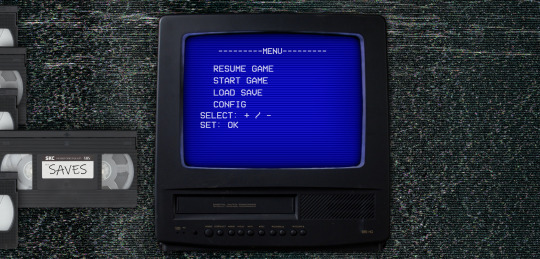
Here's a quick preview of the UI for both PC and mobile (open for better quality). Apologies for not being able to capture video of the PC UI, OBS decided to be a dick today. The side menu on PC features various VHS tapes that slide out from the side of the screen smoothly when hovered over to reveal the title on the front, and can be clicked to "insert the VHS" and view the menu on the main screen.
Note that all of this is subject to change, especially if y'all have any feedback, and might be overhauled completely down the line. Also, the scanline effect can be turned off in the settings, and the font in the Leads screen is the body font which can be changed to a dyslexic or serif font if desired :)
#hope y'all like it!#again any feedback is highly appreciated#i'm. happy with it. but not 100% satisfied. but i'm also aware that i've been fiddling with it for so long y'know#signal hill#interactive fiction#if
69 notes
·
View notes
Text
there's just something so charming about the fake authenticity of it all, especially early-era found footage. the scanlines of an old VHS camera, the bad quality masking what's behind the scenes, the pseudo-realism removing the walls of reality and fiction, emphasising the horror to its very breaking point.
this is all to say that i'm thinking a lot about august underground and now want to watch even more fucked up found footage <3
realised that i love found footage horror BUT ONLY when the found footage is a slasher/snuff situation
4 notes
·
View notes
Text
Fuck it. pinnt post of utena amvs i like :)
can i offer you an amv in this trying time? organized and all by “thematically Gets It,” “pretty to look at,” “goofy silly fun,” “editing effects drive me nuts,” and “i just like these” :) tumblr video limit kills me tho so some r just Links 😔
+ warning for the series’ main subject triggers, specifically heavy suggestion of p*philic and inc*tuous abuse
x warning for heavy 90s-style flashing, especially yellow-black, white-black, and red-black. rarely yellow-red-white. no warning for usual amv flashing
* uses clips from the finale, but does not spoil major plot points
** uses clips from the finale and spoils major plot points
You...You Get It
youtube
**+ Learn to Let Go
This gets it... it’s about Anthy.. it’s about her healing.. also it does a great job comparing all the visual parallels throughout the show (of which there r many)
https://www.youtube.com/watch?v=sCWAIlk65Sc
**+x Still Feel
Yes yes yes the climax is about all the LITTLE things not the big things! Girl the thematics... its so on it.
https://www.youtube.com/watch?v=RGwSw2nTJ4g
**+x For Your Love
Flashing is brief red-black. A slow video but man.. I have been a snake, I have been a dog, I have crawled on your floor...I’m not real, I’m a doll to play with... girl you get it
https://www.youtube.com/watch?v=ygpy3-OAh9U
**+White Houses
The song in this is a lot more lighthearted and childish-sounding, maybe a little melancholic and bittersweet, which imo... matches how the show actually feels to watch (at least the first time). The dramatics are fun but this Feels like rgu to me
https://www.youtube.com/watch?v=vQwipIHUEwg
**+xRed Right Hand
Mostly about evil akio moments but I think that its neat it sometimes touches on that idea of “You too, beware... the witch still wanders our world luring in new victims”
This Anime Looks So Cool
youtube
**x+ I'll Find You
I saw this at a con a few years ago before watching the show, and it’s what finally got me to watch it :)
youtube
*+ Overflow
Movie only. “Spoils” the movie but that will mean nothing to you bc its all allegory allegorier allegoriest anyway. The energy she has... so fun :)
youtube
**x Make me Real Again
This and I’ll Find You are very similar.
https://www.youtube.com/watch?v=THN3gYKYojs
**x+La Voiture
Depeche mode shifted down a couple notes for an Apocalypse Arc-centered amv... I go nuts and insane and this makes me want to go Fast
Jast A Little Fun :)
youtube
**+x Bet On It
Legitimately so good and thematically on it omg. love you bet on it utena
https://www.youtube.com/watch?v=Nl0Avf9ZNRc
xThe Boys In The Ohtori Sports Car
An older amv that gets bonus points for absolute shit SD image quality (affectionate). Literally just Akio Car Compilation
Oughghg Editing...
https://www.youtube.com/watch?v=PjIjG4x49H0
**+xTake You There
girl im obsessed. Yesss add those scanlines add that thematically significant VHS corruption distort those colors overlay all these scenes yessss. Big part of the flashing warning is from the editing in this case.
https://www.youtube.com/watch?v=SlSKvz8KNKA
Blinding Lights
In love with the beginning of this especially. Very short. Lots of fun FX, very pretty :)
I Like The It
https://www.youtube.com/watch?v=27FtMooYZXM
Black Roses
Entirely within the Black Rose arc :) its just sooo fun i love swordfights
https://www.youtube.com/watch?v=ks9E-TzV8x4
**+x Sunflower
its just nice :) its good amv is what it is
48 notes
·
View notes
Text
going to ramble a bit about hbomberguy, not the latest video directly more about some of the reaction to it. full disclosure i am a patron of his, have been for a few years, and became a fan of his channel years before that. i think maybe six years ago? give or take.
im maybe experiencing cognitive dissonance bc its nice that something ive enjoyed for a long time is gaining new audience, and of course new criticism. my initial reaction has been one of resistance that i need to check.
but after reading a bit more of the criticism im like. i kinda of agree? only kind of. i feel like the criticism is maybe not directed at me (or types of fans like me) but at folks for whom this is their first encounter with hbomberguy and are hailing him as a career-ruiner and gleefully enjoying the takedowns. dont get me wrong, takedowns are fun and they’ve always been core to his channel. his oldest stuff was debunking and clowning on right wing youtubers. but thats not all he is? and i dont like the idea of him as this Great Takedown Guy because personally the stuff i like best is his media criticism.
and thats not in the way some folks are like “oh yeah i enjoy hbomberguys media analysis but not his political stuff” i like both. but i think if folks are disregarding that side of his channel then theyre not like. idk how to word this im not the best writer. theyre missing out? or missing the point?
my personal favorite hbomberguy video is Halcyon Dreams. I also really enjoy Scanline (which is both him and shannon strucci), the CAD SLA, and the whole And Here’s Why series (especially speedrunning and pathologic). in much of hbomberguy’s other work, he will disagree with creators or producers in ways that aren’t career endings. and i don’t imagine he’s trying to become a person who does that all the time? i see behavior of his that indicates this to me, such as not naming who took his joke in the uber, explicitly saying “if you go harass Somerton you are worse than him”, and how most of And Here’s Why is neutral to positive, even tho the Garbage ones may get more views. the Sherlock has the highest
uhh where am i going with this. i always got points off for my transition sentences in essays
i guess im saying like. i don’t think it’s fair to just view the hbomberguy channel as waiting for the skeletons to come out of the closet. but i also dont think fans (especially y new fans) should put him up on this pedestal, particularly as Guy Who Destroys Careers. its not a good idea to idolize ppl in general, and its not great to live in a mindset of waiting for the next target for you to justify harassing.
#crow.txt#glad i went and read a bit more of the posts by the oerson who got me thinking about this#bc there were good points especially about some folks behavior#even if obviously i dont agree with the main thesis#hbomberguy#video essays
68 notes
·
View notes
Photo

‘Sharp Lapiz - ‘Game Mode’‘
[MISC] [AUSTRALIA] [MAGAZINE] [2001]
“A video game’s look and feel is often highly dependent on specific hardware setups, and for most of the medium’s history, those setups often involved a CRT. The iconic black scanlines we associate with old games, for instance, exist because consoles would tell a TV to only draw every other line — thus avoiding the flickering that interlaced video could produce, and smoothing out the overall image. (...)Old games may look torn or feel laggy on a new TV. That’s in part because LCD screens process an entire frame of an image and then display it, rather than receiving a signal and drawing it right away.
Some games are completely dependent on the display technology. One of the best-known examples is Duck Hunt, which uses Nintendo’s Zapper light gun. When players pull the trigger, the entire screen briefly flashes black, then a white square appears at the “duck’s” location. If the optical sensor detects a quick black-then-white pattern, it’s a hit. The entire Zapper system is coded for a CRT’s super fast refresh rate, and it doesn’t work on new LCD TVs without significant DIY modification.
A less extreme — but much more popular — case is Super Smash Bros. Melee, a 2001 Nintendo GameCube title that’s become one of the most beloved fighting games of all time. (...)Despite its age, and the increasing difficulty of finding a copy, it’s a mainstay at fighting game tournaments.
Melee’s frantic pace has kept players coming back year after year, even after Nintendo released subsequent Super Smash Bros. games in 2008 and 2014. But it also makes the game exceptionally unforgiving of lag. On CRT monitors, which were dominant when the game launched, a character will react almost instantly when you push a button. On a newer TV, the animation may start just a little later, forcing players to adjust their timing, which can put them at a disadvantage.
As with many debates in the gaming world, there’s disagreement over whether new TVs are truly unusable. Not everyone believes the lag is bad enough to justify keeping an old CRT around, especially as flat-panel displays have gotten more responsive. But for now, visiting the Melee section of an e-sports tournament is a little like stepping back in time, as sleek LCD screens give way to bulky black boxes.” ~Adi Robertson, The Verge (”The Last Scan: Inside the desperate fight to keep old TVs alive”, 02/06/2018)
Source: Nintendo Gamer, November 2001 (#4) || Internet Archive; famiconsumer
121 notes
·
View notes
Text
twitch
Did some testing last night. Twitch washes out the colours a bit, especially with the scanlines applied. I might have to see if I can mess with that on my end somehow, but this has some examples of pixelated games, and some polygon heavy ones to get a feel for how it plays in motion. Try watching in fullscreen as the lines can look odd when scrunched down a bit.
Ohohoh it's Device Time

60 notes
·
View notes
Text
Having A Heart Attack | 3 Scary Games Notes
Welcome to the first fire of 2020 y’all! I dunno why I feel like I should put a quick “reminder” here of what these are? It’s been a while since I’ve had anything to take notes on and it’s a new year, so it just kinda feels right!
My theory notes on fiery videos bulletpoint each noteworthy thing or something I find interesting that happens in a video, along with my personal thoughts, theories, and/or debunkings about each point. In other words, not everything I jot down is definite evidence of anything at all, but has enough reason to be mentioned, even if its just to dismiss suspicions. Its also marked down for people who come into fires late and need the important bits of what they missed!
All of my notes, as well as screenshots and theories from myself and others are all compiled on @isas-theory-wall, so feel free to follow so you have somewhere to catch up if you need it!
As for today’s fiery bullshit...
There’s a transition between the first and second game that’s glitchy but Robin has been known to innocently use that affect for horror game transitions before so I don’t think it’s anything to worry about.
There’s another MUCH MORE glitchy transition between the second and third game that I don’t think is as innocent, not to mention the glitching changes from the screen to specifically the facecam. I went frame by frame through the whole transition and there’s an entire pause between the screen’s glitch and the facecam’s glitch, and the way they each glitch are completely different. The screen’s glitch is like the transition from 1st to 2nd game; its the same style as usual innocent, non-cryptic glitchy transitions. They’re quiet, usually red/blue and look more like scanlines and motion blur than legit glitches. But the facecam’s glitching is more like the Bad Glitches we’re used to; has actual blocky glitches, a loud sound, and they had red, blue and green in them- classic colors we associate with Anti. Not to mention the glitches on the facecam were specifically focused over Sean’s head.
14:48 - “It’s got the zalgo type of text which I’m very very fond of” HMMMM WONDER WHY. He also mentions being very fond of glitches and stuff, “as we know.” This isn’t a hint or anything but obviously we all know he’s nudging the aesthetic of how he does Anti stuff.
These are COMPLETE COINCIDENCES because they’re from the game, not Sean; but the red lights bursting one by one are reminiscent of the end of Dark Silence (in the actual game before the Chase cutscene) and when he has to start running from the thing coming at him, the maze reminds me of when you’d be chased through the maze sequences during Try To Fall Asleep.
29:30 - “Be careful what you’re giving attention to. [. . .] You never know what’s going to come for you in the deepest, darkest depths of your mind.” This reminds me of so many things. Always Watching, Overnight Watch, Quit the Game to Win... We know all about the relevancy of attention with Anti. Not to mention this is a bit of an odd way to phrase being careful online. Especially mentioning “your mind” if its supposed to be about caution with technology.
29:44 - Sean’s audio glitches. A window titled “A” pops up and says “Not long now.” I think it’s pretty obvious why it’s titled “A.”
29:51 - Another audio glitch. A window, again titled “A” pops up saying “He’s coming” and the window is glitching.
The after-outro clips are somewhat back (some vids have them, some don’t)! This video’s after clip is innocent but to fellow theorists: make sure to start checking for after clips in suspicious videos (most likely primarily horror games)! Sean has put suspicious things in them before, and we don’t want to miss anything!
197 notes
·
View notes
Photo

Why I Play The Older 8-Bit Consoles
I was born in 1980 so really the Atari 2600 age of consoles is a little before my time. By the time I was gaming in 1985-86, we were well into the NES golden era. But I have went back and collected the older consoles and I enjoy playing them. I’d like to discuss my thoughts on why I dwell on this older generation - and some of the struggles and positives of my hobby here. When I say older here, I really mean systems that pre-date the NES or are older technology. So even though the SMS is pictured there, it’s not really what I’m talking about.
Simple Fun Games Continue Being Fun
The first thing to realize is that these older systems (by that I mean Atari 8-bit machines, Intellivision, and Colecovision) are very limited in the scope of what they have to offer. They are very sparse in processing power, ram, and - subsequently - pixels (let alone sprites) on the screen. This makes newcomers initially scoff at the thought of playing the games. In truth, the good games that came out of this generation overcame those limitations by really having solid concepts and those concepts became the basis for future games that could expand the visual appeal. The notion of fun transcends technical specs and experiencing these early games is one part history and one part simple fun. I’m not nostalgic for these systems (as they are before my time). I came to them the same way any newcomer would and I still fell in love with the simple charm they have to offer.
Overcoming Controller Difficulties
A lot of complaints about the early consoles involve the controllers. While the designs might seem novel interesting at first, someone that actually wants to play these games is quickly going to get over that and not want to continue. I’m not particularly a fan of the Atari Joystick (despite its iconic look). The Intellivision and the Colecovision have very non-ergonomic controllers that incorporate a digital number pad. The good news here is that there are options to bypass these controllers and use NES-pad style or Sega Genesis style controllers. The Genesis controllers generally work just fine with Atari 2600 (with C being the only button). That’s easy. To use a NES pad with the Atari 2600 or 7800 (which has two buttons), you’ll need to do a little modding or buy a pre-made controller. For the Colecovision, I bought a box that converts the controller and also has a digital pad built-in to the box. For Intellivision, I built a custom arcade stick with the numbers built in (I believe the PCBs and even pre-built controllers are available for sale).
Overcoming Graphic Output
If you have an older CRT TV that you can use RF with (you will need a basic s-plug adapter to coaxial), you can experience these older systems the way the originally were (setting your box to channel 3 or 4). But I refuse to use RF because it’s very clunky, they have a lot of static noise (especially after all these years), and I want to use switch boxes to easily go between consoles during a play session. Luckily there are plenty of composite-out solutions if you’re handy with a soldering iron. And the audio is basically going to be mono for these systems - so you can just duplicate or hook up the output to both sides of the TV speakers. There are hacks to add a little separation, but I don’t really think it’s worth it.
I really do recommend sticking to older style CRT TVs for the really old 8-bit consoles by the way. For one, they look fantastic with the scanlines and the natural blurring effect of the TV. For another, this is authentic to the intended experience (if that matters to you). It’s just part of the experience and I love playing this way. It’s just not the same when you play on a LCD TV - not for the older games.
Should You Play These Systems?
If you are someone young that maybe started out with PlayStation or even Nintendo Wii as your first console, this esoteric older stuff might or might not be for you - depending on your personal taste. If you’re into the history of gaming, you might want to experience these systems at least once, but it’s a lot of time and money for what you might just want to check out with a Raspberry Pi or a computer emulator. If you were born - like I was - in that middle time where the 8-bit consoles were transitioning into the 16-bit era, then this might be hit or miss. I personally love playing games like Joust on original Atari hardware. However, I realize it’s not for everyone. However, if you’re at the point where you want to get into something new or expand your collecting to these games (which admittedly are harder to find out in the wild these days), maybe check them out. If you own a Mister setup, then you can at least get your feet wet to see if it might be something you’re going to like.
28 notes
·
View notes
Text
SNK Gals Fighters! They re-released it for Switch!
Suuuper cute. The animations are so good; I love their little cartoon run animations especially, but everything’s so expressive and chibi. It’s a similar art style to other NGPC fighting games, and Pocket Fighter (aka Super Gem Fighter Mini Mix), and Pocket Rumble.
By default, it runs pretty small, inside a skin that looks like a Neo Geo Pocket Color, which is cute for a minute. But you can expand it to fill the vertical space and just make the borders black. And the scanline filter is optional. There’s no netplay, but since it’s running in an emulator, it’s got rewind!
Also, there’s local versus mode. Once we can play with people in person again, I’ve got a tiny chibi Mai with your name on her.
1 note
·
View note